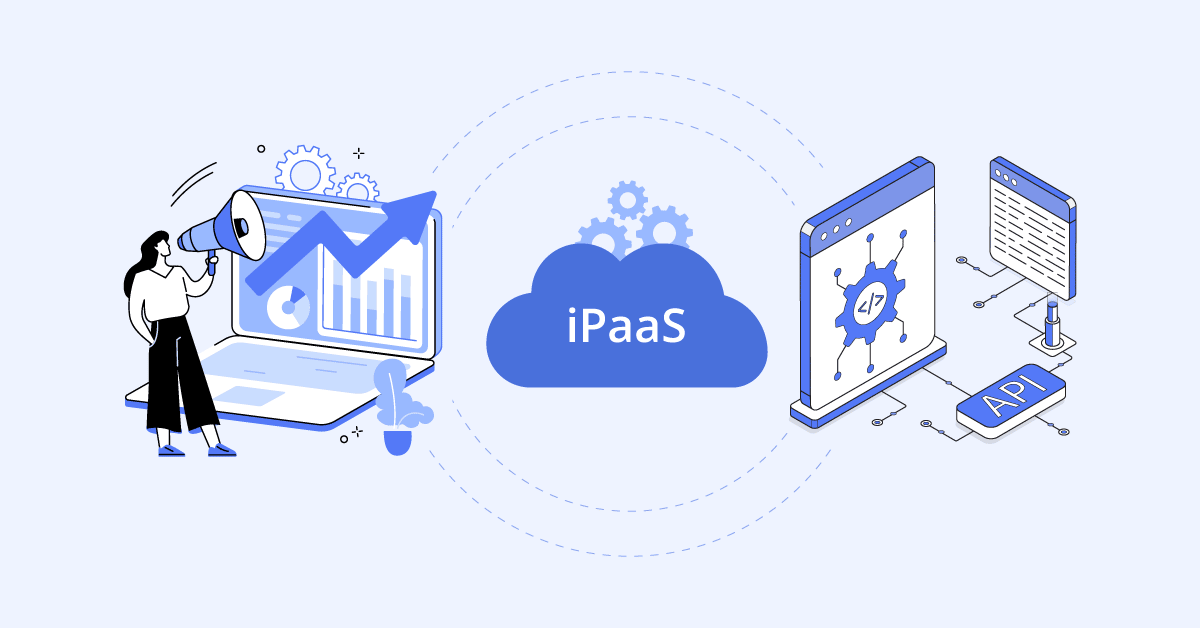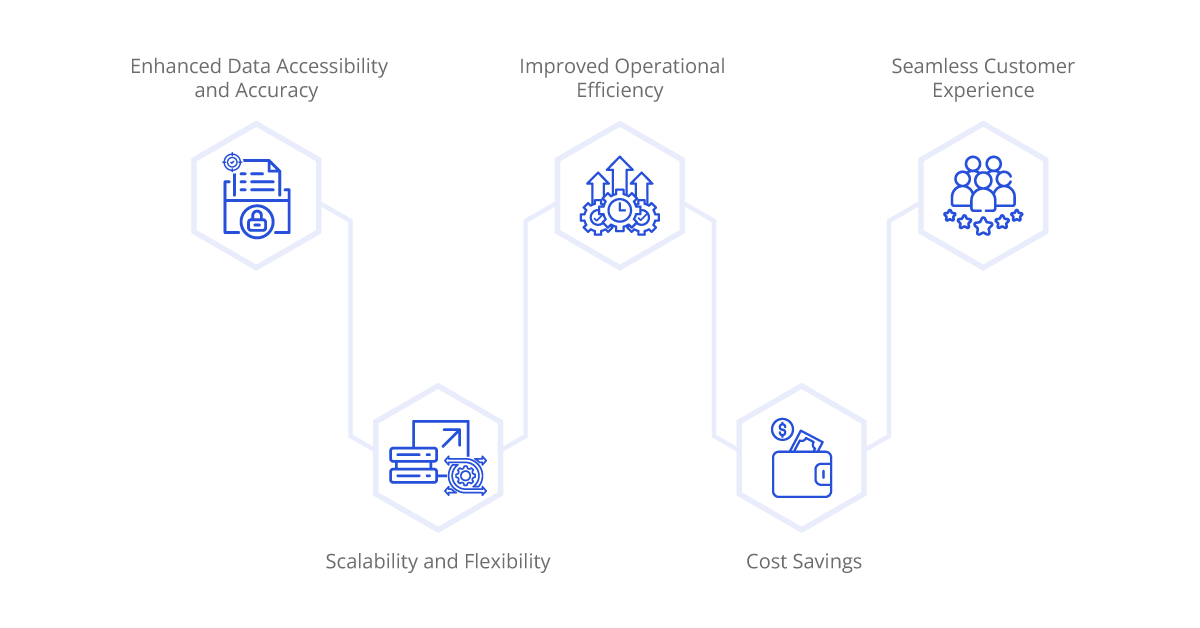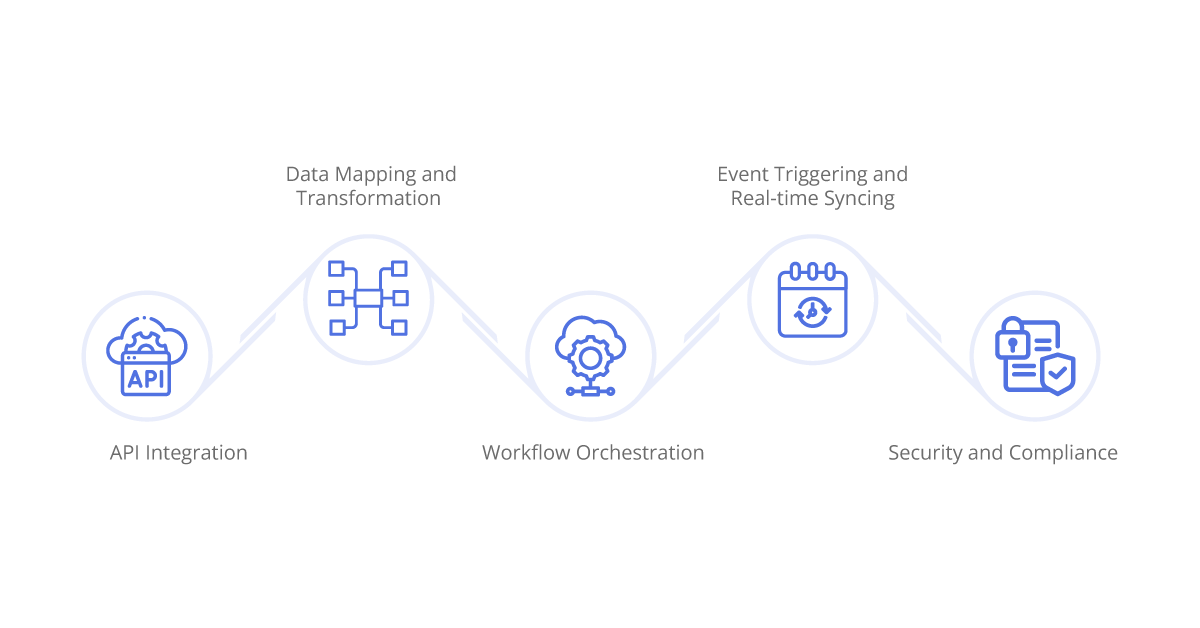Streamlining marketing operations is crucial for businesses to stay competitive in today’s digital landscape. In recent years, integrating marketing systems with iPaaS and leveraging the API economy has emerged as a game-changer. This blog delves into the technical intricacies and benefits of this integration, highlighting how it revolutionizes marketing practices.
Aonflow iPaaS – Free for First 3 Months!
Build and run up to 1,500 transactions monthly with no cost. No payment info needed!
Understanding iPaaS and API Economy
iPaaS Simplified
Integration Platform as a Service (iPaaS) is a cloud-based solution designed to streamline the integration of diverse applications and systems within an organization. In essence, iPaaS acts as a digital bridge, connecting disparate software platforms and enabling them to communicate seamlessly. Imagine iPaaS as the central nervous system of your business operations, orchestrating the flow of data between various applications with efficiency and precision.
At its core, iPaaS eliminates the barriers that often exist between different departments or teams within an organization. By providing a unified platform for integration, iPaaS breaks down data silos and fosters collaboration across the enterprise. Whether it’s linking customer relationship management (CRM) software with marketing automation tools or connecting inventory management systems with e-commerce platforms, iPaaS ensures that critical data can flow freely, empowering teams to make informed decisions and drive business growth.
Furthermore, iPaaS operates within the cloud environment, offering scalability and flexibility that traditional integration methods lack. With iPaaS, businesses can adapt to evolving needs and scale their operations without the constraints of physical infrastructure. This cloud-native approach not only reduces costs but also accelerates time-to-market, enabling organizations to stay ahead in today’s fast-paced digital landscape.
API Economy Explained
The API (Application Programming Interface) economy is a vibrant ecosystem where software applications interact with each other through standardized interfaces, known as APIs. APIs serve as the building blocks of modern digital innovation, allowing developers to access the functionality of existing software platforms and integrate them into new applications or services.
Think of APIs as the language of the digital world, enabling seamless communication between different software systems. For example, when you book a ride through a ridesharing app like Uber, APIs facilitate the exchange of data between the app and various external services, such as mapping services for navigation or payment gateways for transactions. This interconnectedness enables developers to create rich, integrated experiences that leverage the capabilities of multiple platforms simultaneously.
Moreover, the API economy promotes collaboration and interoperability among developers, encouraging them to share and reuse APIs to build upon each other’s work. This not only accelerates the pace of innovation but also fosters a community-driven approach to software development.
Benefits of Integrating Marketing Systems with iPaaS and API Economy
1. Enhanced Data Accessibility and Accuracy
Integrating marketing systems with iPaaS ensures that data flows seamlessly across all platforms, eliminating the risk of inconsistencies or inaccuracies. This means that marketers can access up-to-date insights in real time, enabling them to make informed decisions with confidence. By centralizing data management, iPaaS empowers marketers to gain a comprehensive understanding of their audience, campaign performance, and overall marketing effectiveness without delays or discrepancies.
2. Improved Operational Efficiency
Automation lies at the heart of modern marketing operations, and iPaaS facilitates this by automating repetitive tasks such as data synchronization, lead routing, and campaign management. By automating these processes, iPaaS streamlines workflows, reduces manual effort, and minimizes the risk of errors. This not only saves time and resources but also enables marketers to focus on strategic initiatives that drive business growth and innovation.
Aonflow is the leading integration platform.
You can kick-start by integrating your first-ever workflow in just a matter of minutes.
3. Seamless Customer Experience
Integrating marketing systems with iPaaS enables businesses to create a unified view of the customer by consolidating data from various touchpoints such as CRM systems, social media platforms, and e-commerce websites. This holistic approach allows marketers to gain deeper insights into customer preferences, behavior, and interactions, enabling them to deliver personalized experiences that resonate with individual customers. By tailoring their marketing efforts to meet the unique needs of each customer, businesses can foster loyalty, increase engagement, and drive long-term customer satisfaction.
4. Scalability and Flexibility
The scalability of iPaaS solutions empowers businesses to adapt and grow in response to changing market dynamics and business requirements. Whether it’s expanding into new markets, launching new products, or accommodating fluctuations in demand, iPaaS provides the agility needed to scale marketing operations efficiently. Moreover, iPaaS solutions are designed to be flexible and customizable, allowing businesses to tailor their integration strategies to suit their specific needs and objectives. This ensures that businesses can future-proof their marketing operations and stay ahead of the competition in a rapidly evolving digital landscape.
5. Cost Savings
Integrating marketing systems with iPaaS can lead to significant cost savings for businesses by reducing manual intervention, minimizing errors, and optimizing resource utilization. By automating repetitive tasks and streamlining workflows, iPaaS helps businesses operate more efficiently, thereby reducing operational costs. Additionally, iPaaS eliminates the need for expensive custom integrations or maintenance, making it a cost-effective solution for businesses of all sizes. By leveraging iPaaS to streamline their marketing operations, businesses can achieve greater efficiency, agility, and cost-effectiveness, ultimately driving better business outcomes and ROI.
Technical Aspects of Integration
1. API Integration
API integration serves as the backbone of connecting disparate marketing systems, enabling seamless communication and data exchange. This process involves leveraging APIs (Application Programming Interfaces) provided by various platforms to facilitate interoperability between systems. For instance, API integration enables the synchronization of customer data between CRM (Customer Relationship Management) and marketing automation platforms, ensuring consistency and accuracy across the marketing ecosystem. Additionally, API integration allows businesses to integrate with third-party tools such as social media platforms and analytics tools, enhancing their marketing capabilities and leveraging valuable data insights.
2. Data Mapping and Transformation
Data mapping is a critical aspect of integration, involving the definition of how data elements from different systems correspond to each other. iPaaS platforms offer robust data mapping capabilities, allowing businesses to transform data formats, reconcile schema differences, and ensure data integrity throughout the integration process. This ensures that data is accurately interpreted and utilized across the marketing ecosystem, enabling marketers to derive meaningful insights and make informed decisions based on reliable data.
3. Workflow Orchestration
Workflow orchestration plays a key role in automating complex business processes within the marketing ecosystem. This involves defining workflows that dictate how data should flow between systems and trigger actions based on predefined conditions. iPaaS platforms provide visual workflow design tools that empower marketers to create, manage, and optimize workflows without requiring extensive coding knowledge. This enables marketers to automate marketing campaigns, lead nurturing sequences, and other critical processes with ease, streamlining operations and improving efficiency.
4. Event Triggering and Real-time Syncing
Real-time data synchronization is essential for ensuring that marketers have access to the most up-to-date information when making decisions or executing campaigns. iPaaS platforms support event-based triggering mechanisms that enable real-time syncing of data between systems. For example, event-triggering mechanisms can capture new leads, update customer records, or trigger personalized communications based on user interactions, ensuring that marketing activities are always in sync with the latest data. This real-time syncing capability enhances agility and responsiveness, enabling marketers to deliver timely and relevant communications to their audience.
5. Security and Compliance
Security is paramount when integrating marketing systems with iPaaS, especially when handling sensitive customer data. iPaaS platforms employ robust security measures, including data encryption, access controls, and compliance certifications, to ensure that data remains secure and compliant with regulatory requirements. Additionally, iPaaS platforms offer monitoring and auditing capabilities that allow businesses to track data access and usage, mitigating the risk of data breaches or compliance violations. By prioritizing security and compliance, businesses can safeguard customer data and build trust with their audience, enhancing their reputation and credibility in the market.
Conclusion
Integrating marketing systems with iPaaS and leveraging the API economy offers a myriad of benefits, ranging from enhanced data accessibility and operational efficiency to seamless customer experiences and cost savings. By embracing this integration, businesses can unlock new opportunities for innovation, scalability, and competitiveness in today’s fast-paced digital landscape. As technology continues to evolve, the role of iPaaS and API economy in marketing will only become more prominent, empowering businesses to achieve greater success in their marketing endeavors.
Aonflow iPaaS – Free for First 3 Months!
Build and run up to 1,500 transactions monthly with no cost. No payment info needed!


